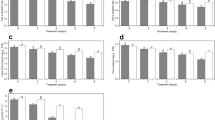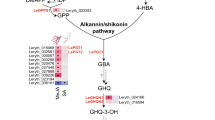Abstract
SINCE triethanolamine was found to be an excellent emulsifier1 it has been widely used in this capacity and also as an esterifying substance for plant regulators and herbicides of low solubility2,3.
This is a preview of subscription content, access via your institution
Access options
Subscribe to this journal
Receive 51 print issues and online access
$199.00 per year
only $3.90 per issue
Buy this article
- Purchase on SpringerLink
- Instant access to full article PDF
Prices may be subject to local taxes which are calculated during checkout
Similar content being viewed by others
References
Wilson, A. D., Ind. Eng. Chem., 22, 143 (1930).
Kaufman, P. B., and Crafts, A., Hilgardia, 24, 411 (1956).
Rosen, H. R., and Shaw, L., Agric. Res., 39, 41 (1929).
Friesen, H. A., and Walker, D. R., Can. J. Plant Sci., 37, 69 (1957).
Zimmerman, P. W., and Hitchcock, A. E., Contr. Boyce Thompson Inst., 12, 321 (1942).
Author information
Authors and Affiliations
Rights and permissions
About this article
Cite this article
LAVEE, S. A Physiological Effect of Triethanolamine on the Development of Sclerotium rolfsii (Sacc.). Nature 180, 1494 (1957). https://doi.org/10.1038/1801494a0
Issue date:
DOI: https://doi.org/10.1038/1801494a0



